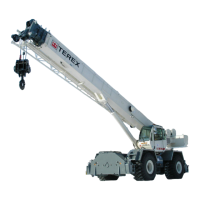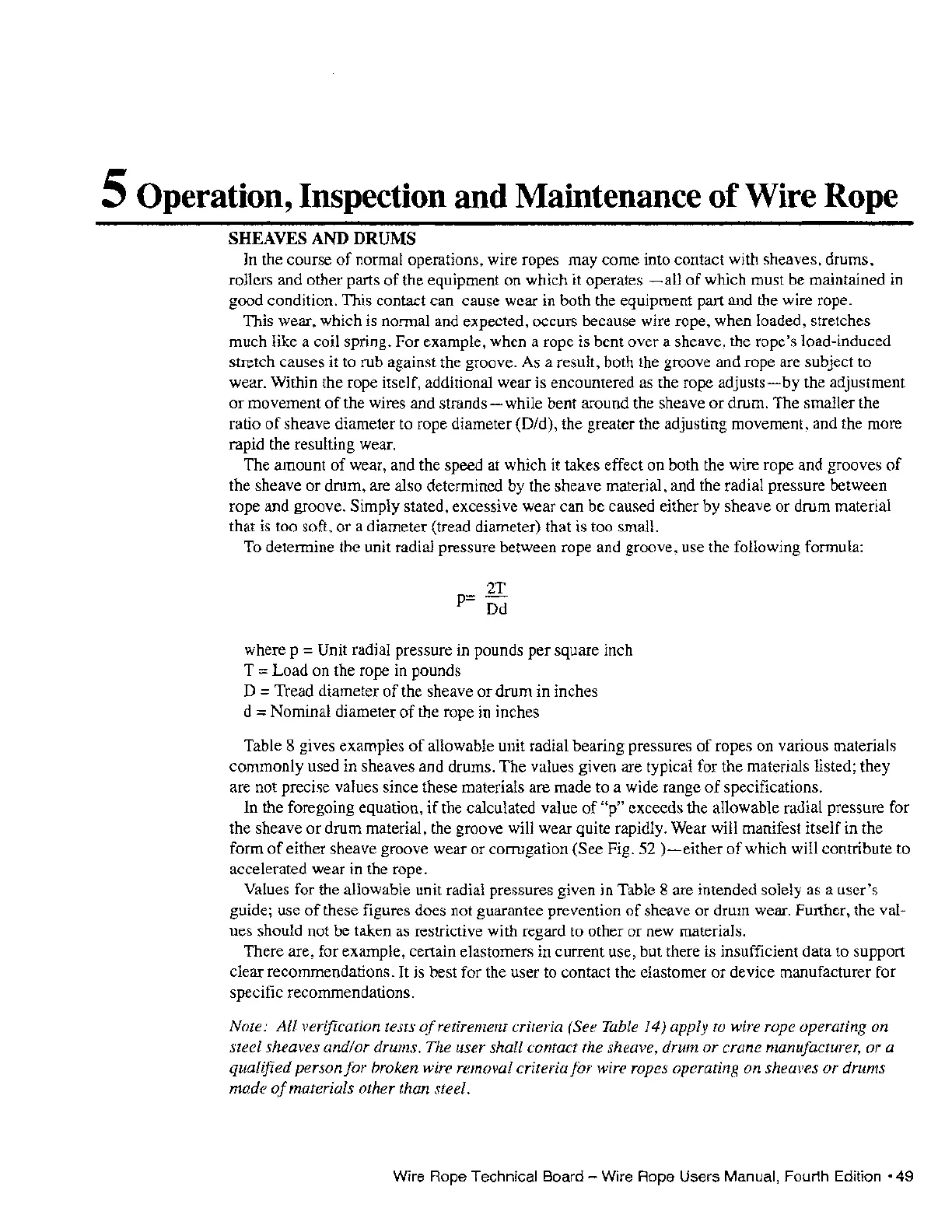5 Operation, Inspection
and
Maintenance of
Wire
Rope
SHEAVES
AND
DRUMS
In the course
of
normal operations, wire ropes may come into contact with sheaves, drums,
rollers and other parts
of
the equipment on which it operates
-all
of
which must be maintained
in
good condition. This contact can cause wear in both the equipment part and the wire rope.
This wear, which is normal and expected, occurs because wire rope, when loaded, stretches
much like a coil spring. For example, when a rope is bent over a sheave, the rope's load-induced
stretch causes it to rub against the groove. As a result, both the groove and rope are subject to
wear. Within the rope itself, additional wear is encountered as the rope
adjusts-by
the adjustment
or movement
of
the wires and strands - while bent around the sheave or drum. The smaller the
ratio
of
sheave diameter to rope diameter (Did), the greater the adjusting movement, and the more
rapid the resulting wear.
The amount
of
wear, and the speed at which it takes effect on both the wire rope and grooves
of
the sheave or drum, are also determined by the sheave material, and the radial pressure between
rope and groove. Simply stated, excessive wear can be caused either
by
sheave or drum material
that is too soft, or a diameter (tread diameter) that is too small.
To determine the unit radial pressure between rope and groove, use the following formula:
2T
p= -
Dd
where p = Unit radial pressure in pounds per square inch
T
= Load on the rope in pounds
D
= Tread diameter
of
the sheave or drum in inches
d
:;::
Nominal diameter
of
the rope in inches
Table 8 gives examples
of
allowable unit radial bearing pressures
of
ropes on various materials
commonly used in sheaves and drums. The values given are typical for the materials listed; they
are not precise values since these materials are made to a wide range
of
specifications.
In the foregoing equation,
if
the calculated value
of
"p"
exceeds the allowable radial pressure for
the sheave
or
drum material, the groove will wear quite rapidly. Wear will manifest itself in the
form
of
either sheave groove wear or corrugation (See Fig. 52
)-either
of
which will contribute to
accelerated wear in the rope.
Values for the allowable unit radial pressures given in Table 8 are intended solely as a user's
guide; use
of
these figures does not guarantee prevention
of
sheave or drum wear. Further, the val-
ues should not be taken as restrictive with regard to other or new materials.
There are, for example, certain elastomers in current use, but there is insufficient data to support
clear recommendations. It is best for the user to contact the elastomer or device manufacturer for
specific recommendations.
Note:
All
verification tests
of
retirement criteria (See Table 14) apply to wire rope operating
on
steel sheaves and/or drums. The user shall contact the sheave, drum
or
crane manufacturer, or a
qualified person
for
broken wire removal criteria
for
wire ropes operating on sheaves
or
drums
made
of
materials other than steel.
Wire Rope Technical Board - Wire Rope Users Manual, Fourth
Edition·
49

